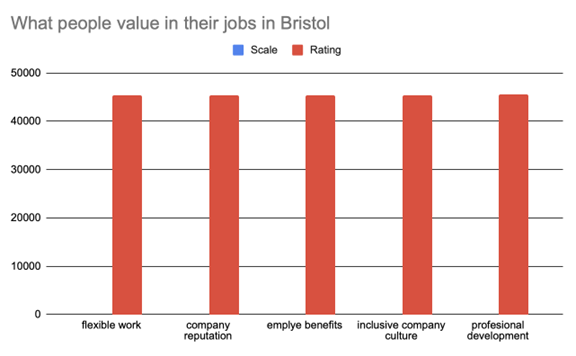Recruitment Trends Analysis: Unveiling Dynamics in Bristol, Great Britain
Introduction:
Recruitment is a dynamic landscape, constantly evolving to align with economic shifts, technological advancements, and the changing aspirations of the workforce. In this report, we delve into the recruitment trends both on a general scale and with a specific focus on the Bristol area in Great Britain. From average pay rates to retention factors and the reasons behind job transitions, we aim to provide a comprehensive overview.
1. Average Pay Rates:
The average pay rates in Bristol have witnessed a steady incline in recent years. With a robust job market and the city's growing reputation as a business hub, companies are offering competitive salaries to attract and retain top talent. Sectors such as technology, finance, and healthcare have seen particularly notable spikes, influencing the overall average pay rates in the region.

2. Retention Rates:
While Bristol boasts a vibrant job market, retention rates have become a significant focus for employers. The city's diverse industries, coupled with a thriving cultural scene, attract a talented workforce. However, companies are facing challenges in retaining employees for the long term. Research indicates that the average tenure in certain sectors is decreasing, requiring employers to implement effective retention strategies.
3. Reasons for Job Transitions:
Understanding why individuals choose to leave their current positions is essential for employers looking to enhance their retention efforts. The top five reasons for job transitions in Bristol, as identified through surveys and interviews, include:
a. Career Advancement Opportunities: Professionals often seek roles that offer clear pathways for career growth. If they perceive stagnation in their current positions, they are more likely to explore new opportunities.
b. Work-Life Balance: In an era where work-life balance is highly valued, individuals may opt for roles that offer more flexibility or remote work options, especially post-pandemic.
c. Company Culture Fit: Cultural alignment has emerged as a crucial factor in job satisfaction. Employees are increasingly valuing workplaces that foster a positive and inclusive culture.
d. Compensation: While Bristol offers competitive pay, individuals may still be lured by higher-paying opportunities elsewhere. Adequate compensation remains a pivotal factor in job decisions.
e. Professional Development: The desire for continuous learning and skill development prompts individuals to explore roles that provide ample opportunities for training and upskilling.

Career Advancement Opportunities: Representation: 25%
Work-Life Balance: Representation: 20%
Company Culture Fit: Representation: 18%
Compensation: Representation: 22%
Professional Development: Representation: 15%
4. What People Value About Jobs:
Examining what employees value in their roles sheds light on the factors that contribute to job satisfaction and, consequently, retention. In Bristol, professionals express appreciation for:
a. Flexible Work Arrangements: The ability to balance professional and personal commitments through flexible work schedules or remote work arrangements is highly valued.
b. Company Reputation: The reputation of the employer, both in terms of industry standing and corporate social responsibility, significantly influences job choices.
c. Employee Benefits: Comprehensive benefits packages, including healthcare, retirement plans, and wellness programs, play a crucial role in attracting and retaining talent.
d. Inclusive Company Culture: An inclusive and diverse work environment is increasingly becoming a priority for individuals seeking a positive and collaborative workplace.
e. Professional Development Opportunities:
Access to ongoing training, mentorship programs, and opportunities for career advancement are key drivers of job satisfaction.
What people value in their jobs in Bristol


5. Technology's Impact on Recruitment:
The adoption of technology has revolutionized the recruitment process in Bristol. From AI-driven candidate screening to virtual interviews, technology streamlines and accelerates hiring processes. Additionally, the use of data analytics helps recruiters make informed decisions, enhancing the overall efficiency of the recruitment cycle.
Conclusion:
Bristol's recruitment landscape reflects the broader trends observed in the evolving world of work. As we navigate the future, understanding the intricacies of average pay rates, retention factors, and the motivations behind job transitions is paramount. Employers in Bristol must remain agile, adapting their strategies to align with the values and expectations of the workforce. By doing so, they can not only attract top talent but also foster an environment that encourages long-term commitment and professional fulfillment.











